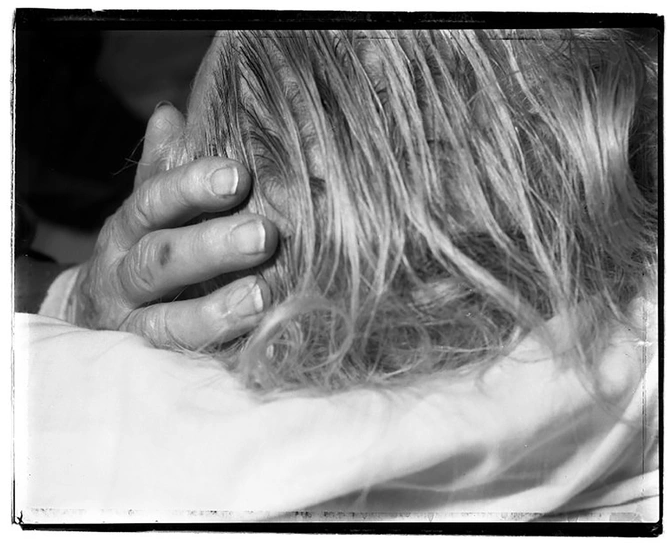
By Joel Theisen
The end of life doesn’t need to be filled with pain, frustration, guilt and clashing family dynamics.
My grandpa was dying of bone cancer, an especially gruesome way to go. He’d shriveled down to 85 pounds. The bathtub was one of the few things that brought him comfort.
So there we sat in his final days as he talked about his life and the things he cared about. He was riddled with pain, yet cracking jokes right and left. We spent hours laughing out loud. It was his way of telling me that he was at peace. And it was one of the most beautiful experiences I’ve had as a human being.
After 30 years as a nurse and chief executive of a senior care company that has served over a million lives in the community and within senior housing, I’ve experienced more than my share of death. I learned that the end of life needn’t be filled with pain and frustration, with guilt and clashing family dynamics. It can be a time to cherish the spark in a loved one’s eye, their spirit and wisdom. And that we can help them die in the most positive way possible.
Your wishes codified
I’ve seen it often through the years. A terminal illness arrives. The dying person’s last wishes aren’t in place. Now tough decisions need to be made in a moment of crisis. Everyone in the family has their own opinion, freighted by our cultural fear of death. I’ve seen it get ugly, with families torn apart. Our loved one doesn’t get the death she wants.
I’ve also seen the opposite, when death is peaceful and lovely. The difference is usually a POLST–portable medical orders — an end of life plan conceived with your doctor that travels with you from hospital to nursing home, or wherever your journey takes you. The idea is to outline your wishes before crisis hits, rather than leaving it to group decisions in times of trauma.
You can take a curative route, signifying your willingness to undergo any treatment as long as there’s a shot. You can take a palliative path, which focuses more on bringing relief and comfort to your final days. Or you can choose a mixture of both, dictating whether you want such things as a feeding tube, a ventilator, or to even be taken to a hospital at all.
The POLST informs family and facilities of exactly what you want. When those final days arrive and family gathers at bedside, there’s no need to speculate on medical choices. Everything that’s important is already in place.
Hospice
Chances are that a loved one with a terminal condition is already eligible for hospice care, offered free to Medicare recipients who’ve been certified by a doctor as having six or less months to live. The program was conceived by the federal government after realizing that people were spending most of their money during the last two years of life. Their savings were being drained by extraordinary measures that didn’t really help, rather than concentrating on the supportive care they truly needed.
Instead of sending you to a hospital, hospice comes to you, be it your home of 40 years, or your apartment in an assisted living facility, or even a relative’s house. It’s all about comfort. You’ll be cared for by experts in death and dying whose mission is to provide the least restrictive experience possible.
Nurses, aides, and physicians work within your plan. They can bring you a hospital bed to help you sleep or equipment to help you breathe. There’s spiritual care, music therapy, visiting aides, volunteers, and bereavement coverage for family. There’s also a pain management plan, with the goal of making the end of life as serene as possible.
The most peaceful deaths I’ve seen are when people die in their own homes on their own terms. The Medicare hospice program helps make that happen, especially when it’s used sooner than the final days of life.
This doesn’t mean you can’t turn back. We’re humans. We get scared. You can leave hospice whenever you want for one last shot with chemo and radiation. The larger point is that you and your family are educated early, preparing emotionally, mentally, and spiritually. And that someone will be with you the entire journey, holding mom’s hand — or your hand if that’s what you need — to help you make the most of those final days.
I know about trauma. My sister died in a car crash at age 43, leaving behind two kids. It was a horrific experience, but we’ve chosen to make the most of it.
Every year we take a family vacation. And every year we set aside time to celebrate my sister. We talk about our feelings and frustrations, our love and loss. It’s not always a glorious celebration. But it’s helpful.
Circumstances didn’t allow us to prepare for her death. So we’re trying to make the most of it in retrospect.
Like it or not, no one on this planet is getting out alive. Though our finish line may be the same, the ways we get there — and the methods we choose to deal with the aftermath — are often up to us. A solid plan for the final stages will help both us and our survivors. Start talking now with your loved ones. The more we do, the less we fear the inevitable. What you discover may provide the means for not just an end, but a magnificent one.
Complete Article ↪HERE↩!
